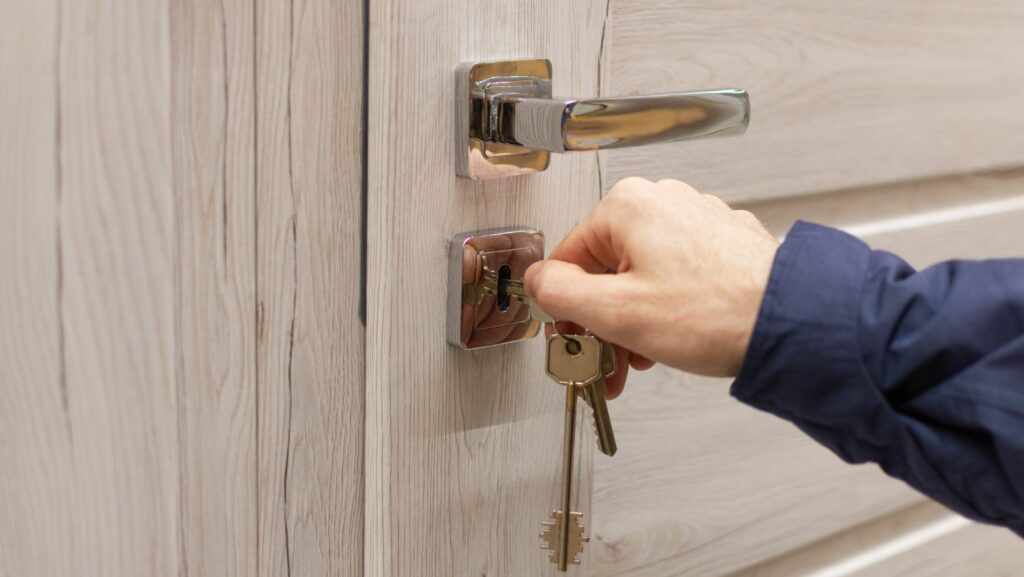Phone:
(701)814-6992
Physical address:
6296 Donnelly Plaza
Ratkeville, Bahamas.

The attic is often a storage place for rarely used items—holiday decorations, old furniture, seasonal sports gear, and other things you want out of sight. With that, it’s not surprising that the ceiling attic access door is usually an afterthought.
But the days of using a simple, ill-fitting piece of plywood that looks out of place and lets air leak through are over.
Modern ceiling attic access panels cover the attic and more. They’re easier to operate, save energy, and preserve the ceiling’s appearance.
The ceiling attic access door is common in today’s construction upgrades. Let’s explore why.
Aesthetic Integration
Most modern ceiling attic access doors have sleek designs that sit level with the surrounding ceiling material. Some, especially the metallic kind, have a smooth surface you can paint to match the ceiling.
Others have recessed designs featuring sturdy aluminum frames and infilled drywall to match the ceiling. This creates a clean, seamless look that makes a space feel more polished and modern.
Improved Functionality
The days of struggling with a heavy, awkward panel are over. Modern attic access panels are easy to use.
Many models have features that make getting into the attic simple. A popular choice is a hinged design that opens with a gentle push, often with the help of gas struts for a controlled and safe motion.

This means you don’t have to worry about the panel swinging down unexpectedly or crashing to the floor.
Energy Efficiency and Home Insulation
One of the biggest benefits of upgrading the attic door is how much it can improve a building’s energy use.
A standard, uninsulated panel can be a source of heat loss in the winter and heat gain in the summer. It’s like having a hole in the insulation, letting heated or cooled air out and unconditioned air in.
Many access doors and panels today fix this problem. They have high-quality insulated cores made from materials like foam that act as a thermal barrier. The seals on these panels are airtight, stopping drafts and keeping the temperature in the building steady.
Sealing entry points puts less stress on the HVAC system, saving on utility bills and making indoor spaces more comfortable.
Installation plays a big part in ensuring these ceiling attic access doors work well. For best results, consider these essential tips.
Ideal Location
While putting the panel in a hallway or closet is common, consider :
The location should also follow local fire building rules and have enough space to use a ladder safely.
Sizing and Framing
It’s not enough to measure the opening. Check the wood framing around it, too. The existing boards might need to be reinforced or replaced with new ones for a stronger hold.
This is especially important for heavier panels or openings that aren’t a standard size.
Materials and Performance
The type of material you choose should go beyond looks. Features like durability, insulation (R-value), and gasketing should be key considerations. Use panels with a high R-value and an airtight seal to meet or exceed energy efficiency requirements.
Look for panels with a clean trim to save time on painting and give a smooth, professional look.
Safety and Structure
A professional’s job is to make sure the installation is completely safe. This means checking that the ceiling beams are strong enough to hold the weight of the new panel.
Ensure all screws and fasteners are secure to guarantee the panel stays in place and maintains a tight seal over time. This attention to detail prevents future issues and ensures the integrity of the ceiling.
Here are some of the most practical and innovative ways construction professionals use attic doors today:
Residential
When upgrading old homes, attic access panels help improve energy efficiency and give the space a more polished look. As mentioned, theyare also a go-to storage area for less-used items.

An access door also provides an easy entry point for attics that double as living spaces, keeping the finished space below looking neat.
Commercial
In commercial spaces, ceiling access panels mostly help with maintenance and safety. They provide easy, secure entry to important systems like electrical wiring, fire suppression equipment, and HVAC ducts hidden in the ceiling.
Fire-rated and insulated ceiling access doors help meet strict building codes for fire containment.
For places like hospitals, offices, and factories, a quality access panel ensures that maintenance can happen quickly and safely without disrupting daily operations.
To sum it up, upgrading a building’s attic access does more than keep the room looking good. It raises the property’s value, improves comfort, and ensures efficient energy use.
Proper attic access helps maintain indoor air quality and save on utility bills. They are important for maintenance in spaces where systems like HVACs are in the attic.
Though attic panels might seem small, they can impact a building’s overall function and performance, whether for a residential, commercial, or industrial space.